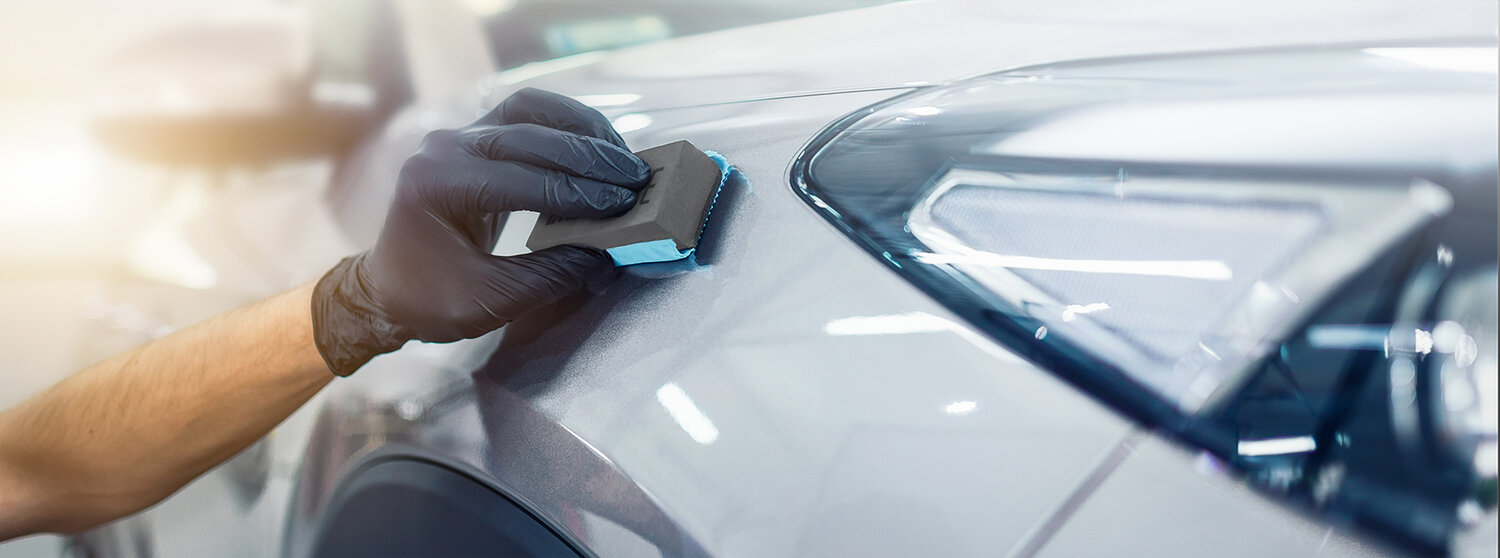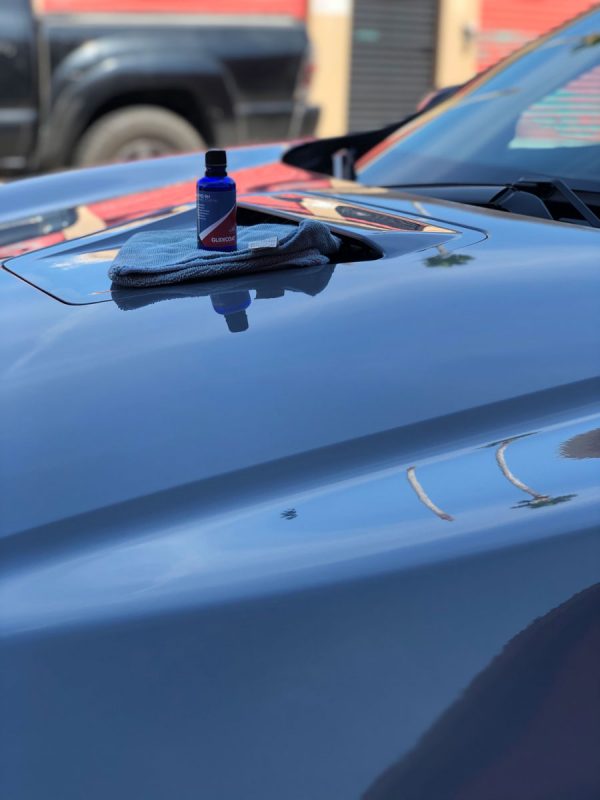Ceramic Coating vs. Sealants: Comprehending the Differences for Your Automobile
Ceramic Coating vs. Sealants: Comprehending the Differences for Your Automobile
Blog Article
The Significance of Ceramic Coating: Safeguarding Your Automobile's Exterior With Precision
In a period where keeping the visual and useful stability of your car is critical, ceramic coating arises as a crucial solution. This safety layer not just defend against ecological misfortunes yet likewise boosts the aesthetic charm of your vehicle. With its special bonding homes, ceramic layer supplies a level of defense that much surpasses typical waxing methods. Yet, exactly how exactly does it achieve such exceptional results? As we explore the nuances of its application and contrast it to various other options, one can not aid but question concerning the specifics that make this innovation indispensable for modern automobile care.
Benefits of Ceramic Coating
When it involves preserving a vehicle's aesthetic charm, ceramic coating supplies substantial benefits. This advanced protective layer gives a resilient shield versus environmental pollutants, including dust, gunk, and damaging UV rays. By forming a semi-permanent bond with the automobile's paint, ceramic layers effectively avoid oxidation and fading, making certain that the automobile maintains a glossy, showroom-like coating for an extended duration. This not just enhances the car's aesthetic appeal however likewise adds to its long-lasting value.
Along with its protective top qualities, ceramic coating provides amazing hydrophobic homes, causing water and various other liquids to bead off effortlessly. This feature simplifies the cleaning procedure, as dust and particles are much less most likely to follow the surface area, lowering the regularity and initiative needed for maintenance. In addition, the finish's resistance to chemical discolorations from acidic contaminants like bird droppings and tree sap is an additional noteworthy benefit, reducing prospective paint damages.
Ceramic coatings likewise boost scrape resistance, providing a layer that can take in small abrasions and swirl marks. This feature is specifically useful in preserving a pristine surface area, minimizing the probability of noticeable imperfections and maintaining the honesty of the automobile's paintwork with time.

How Ceramic Layer Functions
Understanding the technicians behind ceramic layer discloses its effectiveness as a protective remedy for automobiles. Ceramic layers are essentially liquid polymer applications that chemically bond with a car's factory paint, creating a safety layer.
Application of ceramic layer includes a precise procedure. The lorry's surface should be completely cleaned up and sanitized to make sure optimal attachment. When applied, the fluid polymer forms a semi-permanent bond with the paint, setting into a transparent, sturdy guard. This guard boosts the car's gloss and hydrophobic residential properties, helping with simpler cleaning by triggering water and contaminants to bead and slide off effortlessly.
Additionally, the finishing's molecular framework supplies resistance to minor scratches and chemical discolorations. Unlike waxes or sealants that sit on top of the paint, ceramic coverings integrate with the surface area, offering long-lasting security. This integration is fundamental to its performance, guaranteeing the lorry's surface continues to be pristine for years.
Contrasting Ceramic Coating to Alternatives
In the world of vehicle protection, ceramic finish stands as a powerful choice when compared to conventional choices such as sealants and waxes. While waxes offer a short-term lustrous finish, normally lasting just a couple of explanation weeks to months, ceramic finishings offer a longer-lasting option, frequently sustaining for several years. This sturdiness is attributed to the chemical bonding that happens when ceramic coverings are used, developing a solid layer that is immune to ecological threats.
Contrastingly, sealers, although more resilient than waxes, still disappoint the robust security used by ceramic finishings. Sealers can normally last for as much as a year, providing a synthetic guard versus specific elements. They lack the remarkable hydrophobic residential properties and UV protection that ceramic coverings deliver.
Moreover, ceramic finishes provide boosted scrape resistance, which neither waxes nor sealers can efficiently match. In recap, while conventional waxes and sealants use standard security, ceramic finishings offer a thorough, long-term service that significantly enhances and preserves the car's outside coating.
Application Process Discussed
Applying ceramic finish to an automobile calls for a thorough process to ensure optimum outcomes and toughness. The preliminary action entails thoroughly cleaning the cars and truck's surface to eliminate dust, grease, and previous waxes. This is essential for making certain the coating sticks effectively. A pH-neutral shampoo and a clay bar treatment are usually made use of to achieve an immaculate surface. Once cleansed, the automobile is dried and brightened to eliminate any blemishes, as any existing scratches or swirls can come to be much more noticable after the finishing is used.
Complying with surface area preparation, the application of the ceramic finishing starts. Utilizing an applicator pad, the ceramic layer is used in tiny areas to ensure also coverage.
After application, the covering calls for a specific healing duration, during which the lorry must be shielded from water additional reading and contaminants. This curing procedure can differ relying on the item however normally ranges from 24 to 48 hours. Ultimately, this thorough process is essential in attaining a resilient and glossy surface.
Maintenance Tips for Durability
To keep the long life of a ceramic covering, adherence to a self-displined maintenance routine is vital. Routine washing is paramount; utilize a pH-neutral cars and truck hair shampoo and soft microfiber mitts to stay clear of abrasions. Avoid automated vehicle cleans, as their extreme brushes can endanger the finish's stability. Instead, select a hand laundry to make sure comprehensive yet mild cleaning.
Post-wash, drying out the vehicle with a tidy microfiber towel protects against water places that may degrade the finishing gradually. In addition, use a ceramic layer booster every few months. These boosters reinforce the hydrophobic properties and improve the covering's safety capabilities, ensuring it continues to be efficient against contaminants.
Keep in mind that vehicle parking locations play an important duty in maintenance. ceramic coating. Whenever possible, park in shaded locations to reduce UV exposure, which can gradually damage the coating. For lasting storage, take into consideration utilizing a vehicle cover for included security versus environmental official website aspects
Conclusion
In final thought, ceramic coating serves as a vital protective layer for car exteriors, supplying durable protection against environmental elements such as crud, uv, and dust rays. Understanding the application procedure and adhering to upkeep referrals are necessary for taking full advantage of the longevity and performance of ceramic covering.
When it comes to preserving an auto's visual charm, ceramic layer supplies substantial benefits. By developing a semi-permanent bond with the automobile's paint, ceramic layers efficiently prevent oxidation and fading, making sure that the automobile maintains a glossy, showroom-like coating for an extended period. Ceramic finishes are essentially fluid polymer applications that chemically bond with a cars and truck's manufacturing facility paint, producing a protective layer. In summary, while traditional waxes and sealers provide standard security, ceramic layers provide a thorough, long-term remedy that substantially preserves the lorry and enhances's outside coating.

Report this page